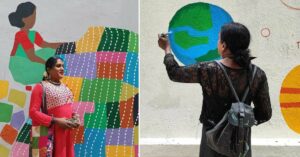TBI Art & Culture: The Warlis – The painting is on the wall
Warli Art is a lot more than those stick figures you see in art stores these days. Gangadharan Menon takes us on a rich voyage of discovery where he unearths

Warli Art is a lot more than those stick figures you see in art stores these days. Gangadharan Menon takes us on a rich voyage of discovery where he unearths the history, meaning and evolution of Warli Art. And he does this in the most interesting way possible – by meeting and studying the Warli tribe: their traditions, folk tales and everyday life!
It all started four decades ago: in the early 70s. Pupul Jayakar, the woman who unearthed many an Indian folk idiom, along with her field assistant Bhaskar Kulkarni, was on a voyage of rediscovery. First they rediscovered the rich and colourful Madhubani art, and then the amazingly spartan idiom of Warli art that shunned the use of all colours except two: brown and white.

Jivya Soma Mashe, one of the accomplished Warli artists of the time, was invited to New Delhi for a demonstration of their art. In front of unbelieving eyes, on a sheet of brown paper, Jivya drew the figure of Paalghaat, the Goddess of Fertility, sitting in the centre of an intricately drawn temple. When prodded to draw more visuals, Jivya drew a blank. He sheepishly admitted that this is all that every Warli artist knows to draw: the ritualistic drawing of the Goddess which is painted on the walls of a Warli house on the day of the wedding.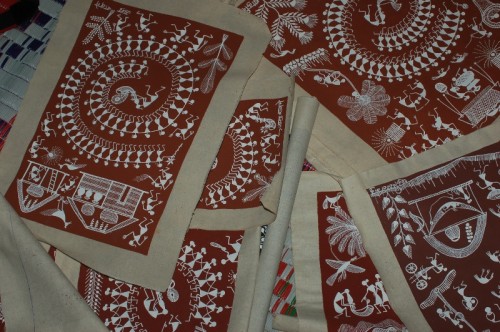
According to Phiroza Tafti, the convenor of the Dahanu Chapter of INTACH, Jivya was encouraged by Pupul Jayakar to break the shackles of convention and depict the rich mythology and the evocative legends of their tribe in their own inimitable Warli style. Jivya came back to his native village and had a meeting with other fellow artists. And once liberated from the strict traditions of ritualistic paintings, the floodgates were opened and out flowed thousands of distinctly different Warli paintings: depicting their myths, folk tales and daily life. And Warli art moved from the depictions of god to the depictions of mortals.

On our visit to Dahanu in the North Konkan belt of Coastal Maharashtra, Phiroza Tafti offered to take us around the padas, or the villages, of the Warli tribe and share her experiences with us. Right from the time she came to Dahanu as a newly-wed city-based rebel who made the chickoo orchard of her husband Jehangir her permanent home.
A pilgrimage to the Waghoba Mandir was first on the list. Here we saw idols carved on totem poles. The totem pole was a relic from pre-historic times and the idol was a symbol of their contact with the rest of the world. Originally, the Warlis never worshipped man-made idols. The shaman of the village on his sojourn to the nearby hills would pick up small rocks that spoke with him in positive tones. These would be kept under trees, and they would then become their places of worship. Over many centuries, influenced by mainstream religions, the weather-beaten stones eventually took man-made shapes and temples were built around them.
While inside the shrine of the Tiger God Waghoba, Phiroza insisted that we sit down and feel the vibrations of the place. And indeed as we closed our eyes in deep meditation, a certain calmness soothed our souls. Was it the sound of the brook that flowed nearby that we heard, or was it the sound of the stream of consciousness?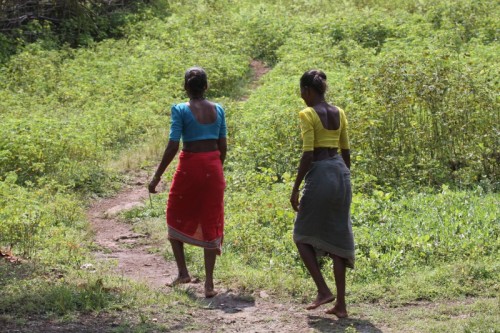
The Warli people are a simple folk with simple beliefs that govern their lives. According to Yashodhara Dalmia, an authority on tribal arts and anthropology, the Warlis are frugal in their habits and speech.
A Warli woman, before she cooks supper, asks her family members how many ‘bhakris’ would each one of them eat that night. And she would then make exactly that number. When Yashodhara asked the woman why she does this every day, day after day, the woman replied, `These bhakris are cooked on the back of Kansaari, our Goddess of Harvest. Why give her more pain than what’s necessary?’
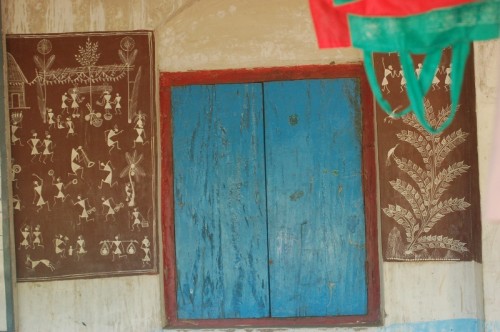
Another unique character of this tribe is that they speak very little, almost in monosyllables. That’s because the Warlis believe that words have an uncanny habit of suddenly becoming real. So they ensure they don’t speak anything untoward lest it becomes true!
Probably in sheer contrast to this frugality, every Warli artist pours his heart out while painting. Though the figures are graphic, devoid of details and colour like cave paintings, they are surprisingly rich in their choice of subjects: human figures in various situations, gods, trees, plants, and animals both wild and domesticated. Even the minutest ant finds place in their paintings. As Yashodhara puts it so succinctly, `They are rich, yet hieroglyphic in effect.’
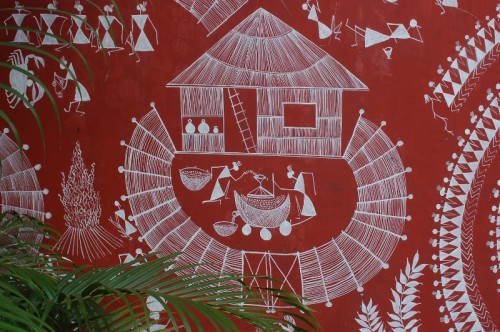
Since Phiroza had to rush off to the school where she teaches, she assigned us to Yashode, her trusted Warli maid of 30 years. Yashode turned out to be more Warli than most: in terms of using words. While giving directions as I was driving, she would just point her hand to the left or the right without speaking a single word!
She took us to the house of Jaanu Ravte, a promising young Warli painter. First he took me to his studio, which he shares with six other artists of his co-operative. Then, after a cup of tea, he took us around his house that was barely lit by a skylight on the tiled roof, and a lone, small window. It was a wall such as this, smeared with mud and cow-dung, that was the original canvas of Warli art. And staring at that dingy wall, I understood why the Warlis don’t use colour but a white, rice-based paint to create their artworks. The sparkling white of the rice-paint gleams in the under-lit house, catching even the faintest of sunrays that come in reluctantly. Giving the painting a truly ethereal feel.
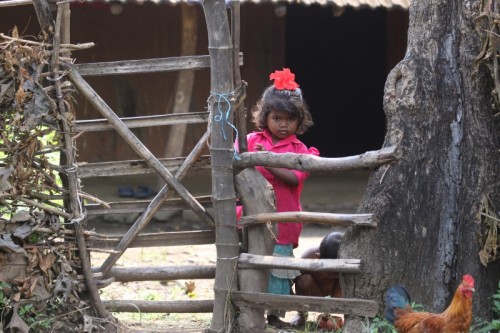
Seeing Janu paint was a revelation. His hand was an extension of his mind, and his brush was an extension of his hand. It started with a basket and around it he weaved a tapestry of Warli life, all in a swirl of perpetual motion.
Today, in response to the art market, villages after villages have taken up Warli painting; and in many cases the raw, creative energy has been replaced by static, decorative motifs that are saleable. Underlining the fact that a painting becomes a work of art only if it’s created by the forces inside, and not the forces outside. And it’s left to artists like Jaanu to uphold the fabulous traditions that have been transferred from one paint-brush to the next, across generations.
All Photos by Gangadharan Menon
This story made me
- 97
- 121
- 89
- 167
Tell Us More
We bring stories straight from the heart of India, to inspire millions and create a wave of impact. Our positive movement is growing bigger everyday, and we would love for you to join it.
Please contribute whatever you can, every little penny helps our team in bringing you more stories that support dreams and spread hope.







